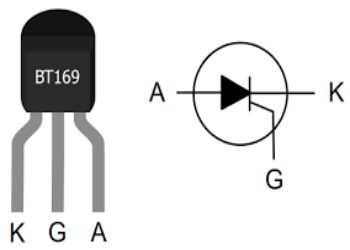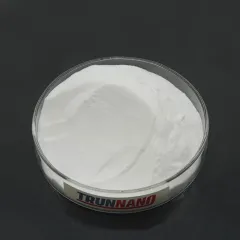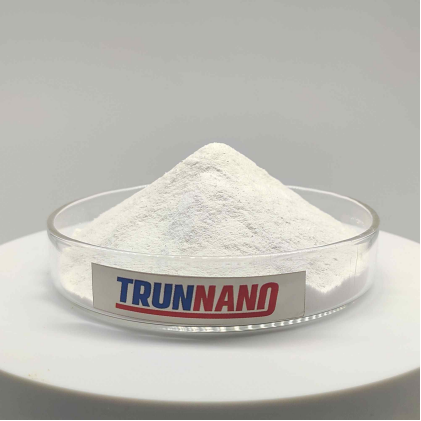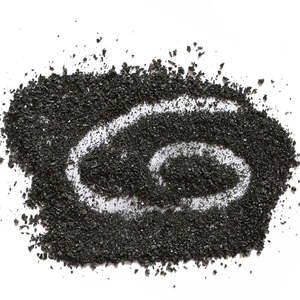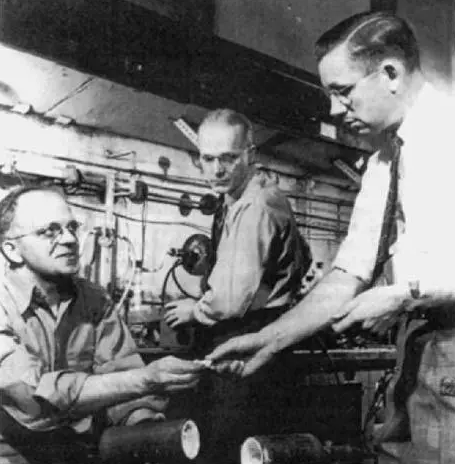PTFE, famously referred to as Teflon, was not a planned exploration. In 1938, DuPont came across this impressive material rather by mishap, stimulating a transformation in products science and commercial applications.
One early morning in 1938, Roy Plunkett, a young chemist, was active having fun with his experiments in a corner of DuPont. His task seemed straightforward: locate a new refrigerant.
(Roy and his colleagues)
However, just when Roy believed it was simply a regular job, things took a turn. He saved the tetrafluoroethylene gas in a cyndrical tube and stated to himself: “Okay, see you tomorrow.” The following day, when he went back to proceed his experiment, he discovered that the gas had strangely disappeared, leaving just a heap of white powder. Well, this was definitely various from the script he prepared. Envision his expression during that time: half baffled, half interested. Upon more examination, he found that this odd white powder had some trendy superpowers: it was hostile to almost all chemicals, can stay great at extreme temperatures, and was as unsafe as oil. All of a sudden, Luo recognized that while he had yet to find a new refrigerant, he had mistakenly uncovered the secret component of the cooking area superhero of the future – non-stick pans. After that, frying eggs was no longer a difficulty, and cleaning pots became a wind.
Although the exploration of PTFE was unintended, it had substantial revolutionary importance for the plastics market and many various other areas, such as aerospace, cars, electronic devices, and devices. PTFE is commonly utilized as a result of its distinct chemical and physical buildings – very low rubbing coefficient, high-temperature resistance, chemical stability, and non-stickiness. From kitchen area utensils to integral parts of the space shuttle, PTFE made numerous innovative applications possible. Yet while PTFE (Teflon ®) marked an innovative breakthrough in products scientific research, it was just the start of a lengthy and hard road to commercialization and widespread application. The initial obstacle was not only to discover a brand-new product yet likewise to determine exactly how to accomplish large-scale manufacturing and how to apply it in various fields.
The procedures of monomer synthesis and regulated polymerization of PTFE were not fully created, making it difficult to generate PTFE in huge amounts or a possible way. While the product’s distinct properties were beneficial ultimately application, they additionally positioned significant difficulties during the production process. Unlike other common plastics, PTFE is not soluble in solvents, acids, or bases and does not melt into a flowable liquid. Rather, when warmed, it ends up being a hard, clear gel that does not melt and streams like plastics.
(Roy’s Notes: Discovery of PTFE)
To conquer these obstacles, scientists and engineers struggled to locate procedures from other areas, such as adjusting strategies from steel and ceramic handling. To shape PTFE, a procedure called paste extrusion was made use of, which was borrowed from ceramic processing. Although conventional molding and forming methods had some trouble processing PTFE, it was feasible to develop PTFE parts. By 1947, substantial study and testing had thrived, and a small production facility was established in Arlington, New Jacket. This marked the start of Teflon ®’s journey from the research laboratory to the market. In 1950, DuPont opened up a brand-new plant in Parkersburg, West Virginia, considerably expanding the business manufacturing of Teflon ®. That exact same year, the modern technology went across the Atlantic when Imperial Chemical Industries built the initial PTFE plant outside the United States in the UK.
Vendor of PTFE Powder
TRUNNANO is a supplier of 3D Printing Materials with over 12 years experience in nano-building energy conservation and nanotechnology development. It accepts payment via Credit Card, T/T, West Union and Paypal. Trunnano will ship the goods to customers overseas through FedEx, DHL, by air, or by sea. If you want to know more about polycarboxylate water reducer, please feel free to contact us and send an inquiry.
Inquiry us
